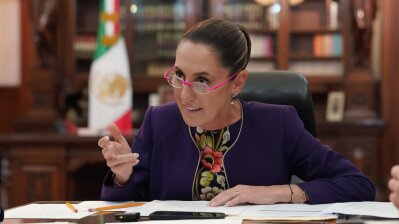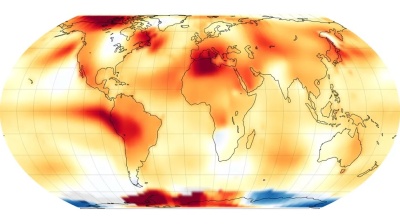Mexico has secured a critical 90-day extension in its negotiations with the United States, temporarily halting the imposition of a 30% tariff on its exports. The agreement, reached on July 31 following a direct phone conversation between President Claudia Sheinbaum and US President Donald Trump, signals a tactical pause in what has become an increasingly coercive US trade posture.
The extension averts, for now, an escalation in tariffs that could have had massive consequences for Mexico’s export-led economy. As reported by El Financiero, President Sheinbaum described the outcome as “the best possible agreement,” pointing out the fact that no additional concessions were offered by Mexico during negotiations. The agreement sustains the 25% tariff rate previously applied to non-exempt goods and delays the rise to 30% originally scheduled for August 1.
The outcome is viewed by Mexican officials as a stepping stone towards broader structural talks. Economy Secretary Marcelo Ebrard stated that the three-month reprieve marks the beginning of a “technical and diplomatic” process leading to the formal review of the USMCA in January 2026. But analysts warn that the lull does not eliminate uncertainty, nor does it resolve underlying structural tensions in bilateral trade.
The United States has explicitly linked future tariff relief to progress on security and migration issues. Trump has conditioned long-term cooperation on Mexico’s ability to curtail the cross-border trafficking of fentanyl and curb flows of undocumented migrants. The New York Times reported that the US also expects Mexico to address its trade surplus and eliminate what it describes as “non-tariff trade barriers.”
In a public post following the call, Trump claimed Mexico had agreed to dismantle many of these non-tariff obstacles. Mexican officials, however, have pushed back against the vagueness of the statement. During a morning press briefing, Ebrard clarified that these “barriers” involve complex regulatory and legal frameworks within the USMCA rather than new restrictions.
Key areas under review include patent processing times, agricultural certification, product labelling, and compliance with labour standards. For instance, Ebrard cited the prolonged processing of patents by the Mexican Institute of Industrial Property (IMPI), which can affect the pricing and accessibility of pharmaceuticals, potentially raising the cost of generic alternatives.
Yet despite the 90-day moratorium, several punitive tariffs remain in place. Mexican automotive exports are still subject to a 25% levy, while steel, aluminium, and copper are taxed at 50%. These measures, imposed earlier in the year, were framed by the Trump administration as responses to Mexico’s insufficient progress on curbing fentanyl trafficking.
The trade measures are also consistent with Trump’s broader protectionist approach. Since returning to office, the US administration has reinstated tariffs on both Canadian and Mexican goods, undermining core provisions of the USMCA. According to data from the US Census Bureau, the US trade deficit with Mexico reached $171.5bn in 2023, up significantly from $63.3bn in 2016. This imbalance is frequently cited by the US president as a justification for his aggressive trade stance.
With more than 80% of Mexico’s exports directed to the United States, the implications of any tariff escalation are substantial. Analysts estimate that the proposed 30% tariff—now postponed—would affect over 40 key industrial sectors. According to Deloitte’s chief economist for Spanish Latin America, Daniel Zaga, the current pause provides relief but fails to resolve the volatility surrounding Mexico’s economic outlook.
Former USMCA negotiator Kenneth Smith Ramos described the development as “a scoreless draw,” noting that Mexico remains vulnerable to unilateral US investigations under trade laws such as Section 232 and the International Emergency Economic Powers Act (IEEPA). He also warned that a definitive resolution on critical exports—such as light vehicles and raw metals—remains elusive.
Pantheon Macroeconomics’ Andrés Abadia concurred that the extension softens immediate economic risks, particularly for export-reliant industries. However, he stressed that without a longer-term arrangement, businesses will continue to face uncertainty, deterring investment and planning.
Gabriella Siller, head of economic research at Grupo Base, called the extension a “positive but incomplete” outcome. She urged policymakers to closely monitor the terms of future negotiations, especially with the 2026 USMCA review approaching.
The latest developments place Mexico in a precarious position. While the Sheinbaum administration has avoided a near-term economic shock, the core issues—migration, fentanyl, and trade imbalance—remain unresolved. US demands are expanding beyond trade to encompass security and border control, entangling economic policy with broader geopolitical objectives.
As the 90-day window unfolds, Mexican negotiators face the dual challenge of preserving market access while resisting overreach that could compromise regulatory sovereignty. The looming USMCA revision now looms larger, with the next months set to determine whether this temporary reprieve evolves into a sustainable framework or merely delays a deeper confrontation.
News

Syria inaugurates Azerbaijan gas pipeline through Turkey
Syria has inaugurated a regional gas transmission line linking the country with Azerbaijan through Turkey.

Iran's Pezeshkian arrives in Lahore for two-day Pakistan visit
Iran's president is expected to meet to discuss security relations with the country's eastern neighbour following the devastating 12-day war with Israel.

Slovenia announces imposition of arms embargo on Israel
Slovenia imposed an embargo on exports, imports and transit of arms to Israel, becoming the first European country to take such action, Prime Minister Robert Golob announced following a government session.

India to continue buying Russian oil despite Trump's threats
Indian officials have said they would keep purchasing oil from Russia despite threats of penalties from US President Donald Trump.




